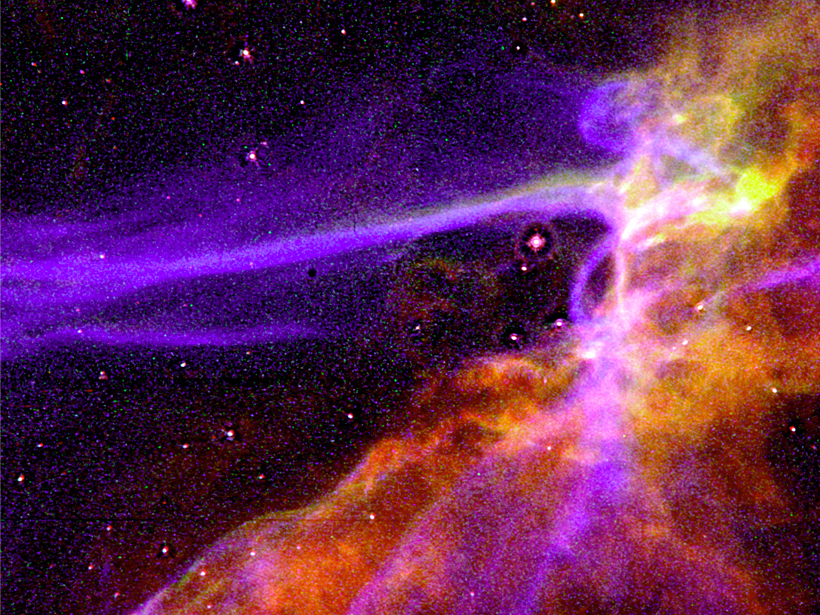NASA Magnetospheric Multiscale (MMS) mission detects energy differences in electrons scattered by magnetic reconnection.
plasmas
Great Mysteries of the Earth's Magnetotail
Workshop on Magnetotail Reconnection Onset and Dipolarization Fronts; Laurel, Maryland, 16–18 September 2015
Human Radio Transmissions Create Barrier to "Killer Electrons"
An interaction between radio waves and the Van Allen radiation belts creates a bubble around the Earth that high-energy electrons can't penetrate.
What Makes Jupiter's Aurora Pulse?
The aurora crowning Jupiter's poles—the most powerful in the solar system—flares up when plasma is injected into its magnetic field.
New Clues to Mysterious Hiss in Earth's Plasmasphere
An analysis of the electromagnetic "hiss" that surrounds Earth reveals it's not just static; there's a signal hidden within, which may help scientists uncover its source.
Magnetized Collisionless Shock Waves Measured in the Lab
Scientists create collisionless shock waves to better understand the phenomenon in nature.
Spacecraft Records Rising-Tone Magnetosonic Waves
A rising tone in wave frequencies suggests a complicated, nonlinear series of interactions between electromagnetic sound waves and protons near the magnetic equator.
Predicting Space Weather on a Satellite Superhighway
Scientists combined 82 satellite years of data to create a more comprehensive model of how plasma behaves in a region of Earth's magnetosphere with heavy spacecraft traffic.
Satellite Data Yield Detailed Picture of the Lunar Wake
Researchers use satellite data to characterize the physical properties of the lunar wake and the processes that govern it.
What Causes Broadband Electrostatic Noise in Space?
Factors that generate electrostatic noise involve how electric fields compress magnetized plasmas.









